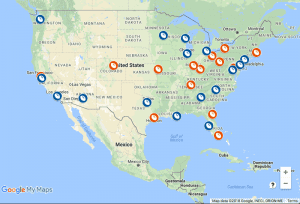Of the 102 companies that marketed genetic testing to consumers for health purposes in 2014, 71 had publicly available terms and conditions:[4] When a user visits a website or uses the services provided by a website, that visit or use is usually subject to a number of legal agreements on the website. One of these agreements is the Terms and Conditions, commonly referred to as the Terms of Use, the Terms of Use and/or the Terms of Use. Because these agreements defy the usual way contracts are presented and accepted, the applicability of these contracts is often misunderstood and challenged in court. If you were asked to provide irrefutable evidence that a particular user has agreed to your terms and conditions, would you be able to do so? Could you tell us when they accepted it and what version was online at the time of adoption? Your answers to these questions determine whether your terms and conditions are legally binding or not. Most people believe that no one really reads the terms and conditions, so why bother presenting them to users, let alone ask for approval of the agreement? The Terms of Use (also known as the Terms of Use and Terms of Use, commonly abbreviated as UGC or UGC, UGC or T&C) are the legal agreements between a service provider and a person who wishes to use that service. The person must agree to abide by the Terms of Use in order to use the service offered. [1] The Terms of Use may also be a disclaimer only, in particular with respect to the use of the Websites. The vague language and long sentences used in the Terms of Use have raised concerns about customer privacy and raised public awareness in several ways. The user must not only know that the conditions of use exist, but also have real or constructive indications that the use of the website is subject to the conditions of use. If this is not the case, the court may decide that the user did not know that he had accepted the conditions, which will invalidate the contract. If you are aware of these things, companies can make changes that increase their chances of success in defending their terms in court. And Ironclad can help you understand that these are just a few of the ways the courts may find your terms unenforceable. To learn more, download the Clickwrap Litigation Trends report or get a demo of Ironclad`s Clickwrap transaction platform.
In order to inform the user of this, you must present your terms of use in a visible way. This means that it is necessary to ensure that the user has seen your agreement, had the opportunity to review your agreement and accepted the agreement positively. According to the court, a visible representation of your agreements means: A breach of contract is a breach of one of the agreed terms of a binding contract. The breach can range from late payment to a more serious breach, such as a failure to deliver .B a promised asset. So, Hypothesis does it with a checkbox and a statement that lets users know that by checking this box, they are accepting the terms of use and other legal agreements: being guilty of this type of “unauthorized access” is simply a misdemeanor. But if the “promoted” act is another type of illegal act, the charge could suddenly become a crime. Drew escaped conviction for a crime, but in November 2008, she was convicted of three hacking offenses [source: Zetter]. What does this mean for the everyday user? A 2013 documentary titled Terms and Conditions may apply published issues related to the service. It has been reviewed by 54 professional critics[8] and won Best Documentary at the 2013 Newport Beach Film Festival and Best Documentary at the 2013 Sonoma Valley Film Festival. [9] Clickwrap agreements allow users to agree to your site`s terms of use by clicking a button or checking a box associated with your agreement. The design of the page can determine whether the user has actually been notified or constructively, but you also need back-end records that prove that an individual customer has agreed to a particular version of your terms of service during a particular transaction.
This means that back-end records are managed to track versions, data, IP addresses, device details, and more. Our intention in updating the terms was to communicate that we want to experiment with innovative advertising that seems appropriate on Instagram. Instead, it was interpreted by many that we would sell your photos to others without compensation. .


